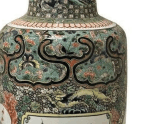The Aesthetics of Clay: Mapuche Pottery, Visual Identity and Technological Diversity

The ceramic artefacts produced and created by the Mapuche people display a tremendous aesthetic richness embodied in a variety of forms and technical solutions that express different visual identities. These ceramics have been made in Mapuche lands since the 3rd century AD, in the territory of what is now known as Chile, in South America. Major changes were introduced when the Spanish conquistadors arrived in these regions in the 16th century, and the lives of these indigenous peoples changed radically. But ceramic artefacts continued to be an important form of expression as incarnations of a wide range of social and cultural signifiers.
In examining the principal ceramic works of historic Mapuche groups inhabiting the region between the 16th and 19th centuries, in terms of decorative modalities and social uses, we observed individual visual identities in pieces intended for domestic and ritual use. The embodiment, in each one of them, of complex aesthetic codes and subtle symbolic content revealed a strengthening in a sense of cultural and ethnic belonging that resulted when ancient elements were combined with European features, and elements that were incorporated as part of the inter-cultural dynamics in play during the colonial era. Today, the relevance of new pieces that recreate and renew these historic ceramic expressions bears witness to the technological and aesthetic power of the Mapuche ceramics universe, and its importance among the ceramics cultures and identities of the southern cone of South America.
Additionally, local and chronological differences in Mapuche ceramics production point to some of
You’re reading a preview, subscribe to read more.
Start your free 30 days



